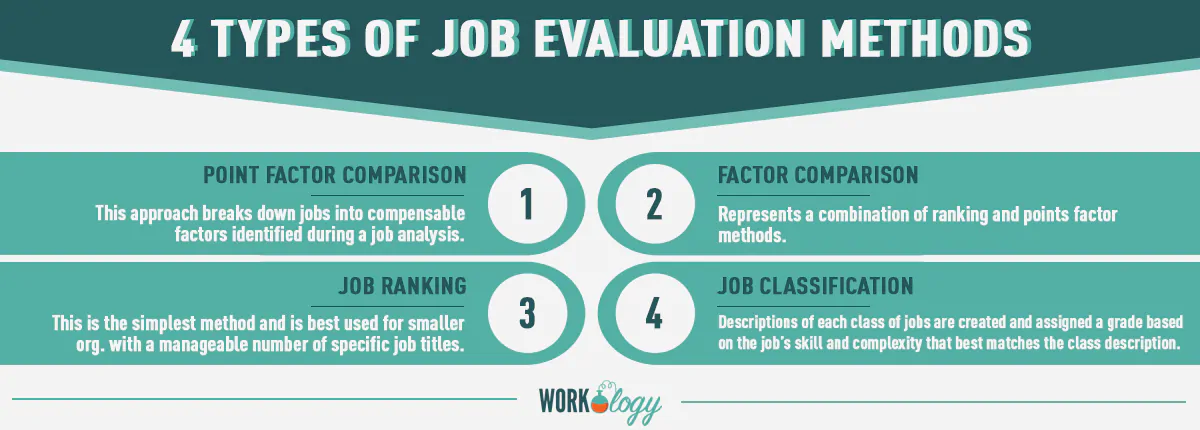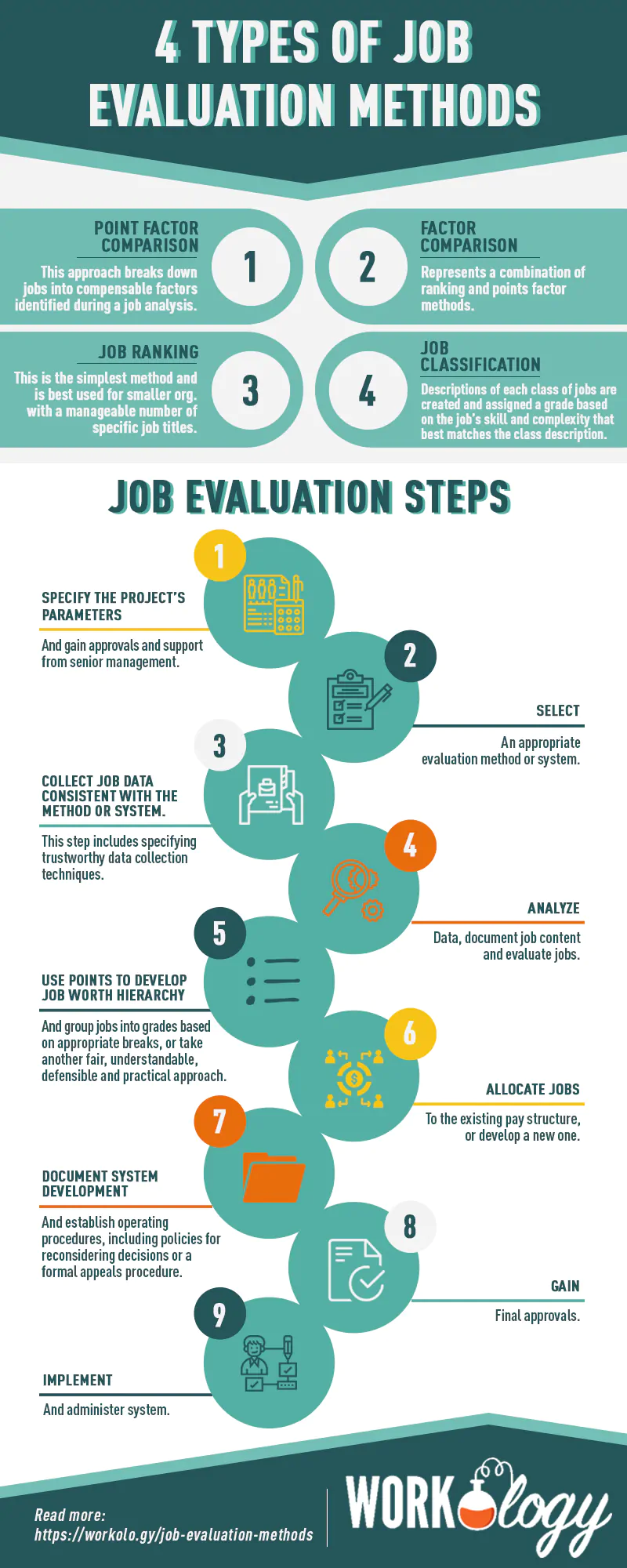Are you looking for digital HR Certification courses? Look no further than Workology’s Ace the HR Exam course.
Another challenging topic for HR leaders to grasp and understand in preparation for their HR certification exams including the PHR, aPHR, SPHR, SHRM-CP, and SHRM-SCP is different kinds of job evaluation methods.
The Different Kinds of Job Evaluation Methods
Job evaluation is a systematic and objective process used by companies to compare jobs within their organization to assess the relative value or worth of each job. This is unrelated to performance reviews, as the goal is to evaluate the job itself, not the person who is performing the job.
Job evaluation typically occurs early in the process of creating a compensation system for an organization. The goal is to make a comparison between jobs to assess their relative worth for the purpose of establishing a logical pay structure. It may be compared to or used in conjunction with market pricing, which uses the labor market to set the value of jobs. An effective job evaluation system determines the best rate of pay for a position and develops a broad job description that adapts to a company’s needs as they change over time. There are a number of ways to approach job evaluation, but there are four primary methods that all HR professionals should know.
The four primary methods of job evaluations used to set compensation levels are point factor, factor comparison, job ranking, and job classification. The first two are quantitative and the latter two are non-quantitative. The difference between the two is: In quantitative methods, the key factors of a job are selected and then measured. In non-quantitative methods, a job is compared as a whole with other jobs in the organization.
Our content continues after the ad.
Ads help make OUR resources free for everyone.
We respect your privacy. To see our Privacy Policy
click here.

Point factor comparison
This approach breaks down jobs into compensable factors identified during a job analysis. Points are assigned to the factors, and a pay structure is established for the position. The jobs with the highest points garner the highest pay. By comparing the jobs, the rank order of importance of each can be established.
Factor comparison
The factor comparison method represents a combination of ranking and points factor methods. Jobs with similar responsibilities within the organization are identified to set benchmarks. Identifiable factors for the benchmark jobs are ranked during factor analysis and then are compared to market rates in order to assign a monetary value to each compensable factor. The advantage of this method is that it is consistent and less subjective, however, it is also the most complex and expensive method.
Job ranking
This is the simplest method and is best used for smaller organizations with a manageable number of specific job titles. Job ranking places jobs in a hierarchy of their value to the company, creating a ranking of jobs within the point factor system. The jobs are typically ranked based on a single factor, such as difficulty or education required to effectively perform the job. The top of the hierarchy is considered the most important level; the person who sits at the top has the most authority. As you go down in the ranking method, duties become less specialized and jobs considered less valuable or expendable. Salaries are typically generated in order of job importance to the company and compensation is then based on ranking order with the highest-ranked position earning the highest pay.
Job classification
This is a grading system. In the job classification method, descriptions of each class of jobs are created and assigned a grade based on the job’s skill and complexity that best matches the class description. The characteristics may include the level of responsibility required, competencies required, and physical exertion necessary to perform the job and, as such, positions may fall within more than one grade level. This method relies on job titles and duties, assuming they are similar among organizations, and job titles are often associated with numerical values, such as HR Specialist 1 and HR Specialist 2 or appending titles with “class 1,” “class 2,” and so on.
A typical job evaluation project includes these common steps:
1. Specify the project’s parameters, and gain approvals and support from senior management.
2. Select an appropriate evaluation method or system.
3. Collect job data consistent with the method or system. This step includes specifying trustworthy data collection techniques.
4. Analyze data, document job content and evaluate jobs.
5. Use points to develop job worth hierarchy, and group jobs into grades based on appropriate breaks, or take another fair, understandable, defensible and practical approach.
6. Allocate jobs to the existing pay structure, or develop a new one.
7. Document system development, and establish operating procedures, including policies for reconsidering decisions or a formal appeals procedure.
8. Gain final approvals.
9. Implement and administer system.
SOURCE: SHRM
Understanding job evaluation is critical for your HR certification exams as there will likely be 2-3 questions asked on these topics come exam day. What tactics or strategies are my using to remember the different job evaluation methods? Leave us a note in the comments below.
Are you looking for digital HR Certification courses? Look no further than Workology’s Ace the HR Exam course.














One Comment
Very informative post.
Comments are closed.